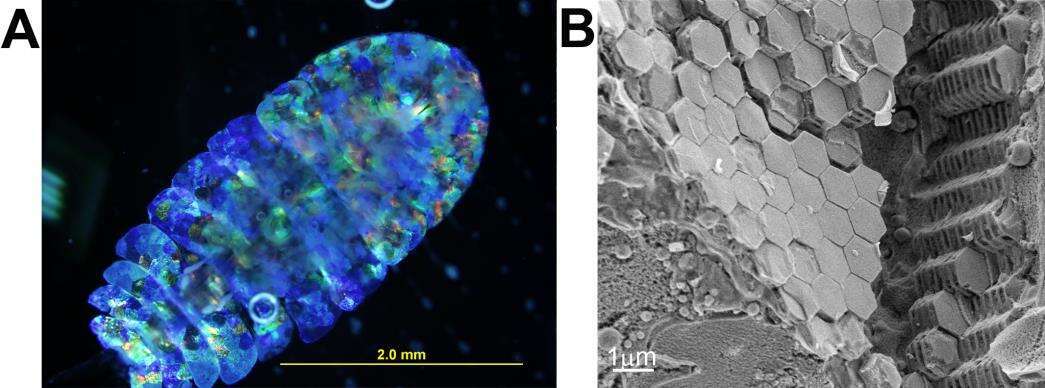BIOGENIC LIGHT INDUCED TUNEABLE PHOTONIC CRYSTALS
Strikingly brilliant structural colours using 2D or 3D arrays of chitin or cellulose fibers, calcite or guanine crystals were independently evolved by organisms to fulfil a variety of functions. Many of these optical systems are based on intra-cellular arrays of thin guanine crystal platelets.
The silver iridescence of fish scales and skin, as well as the brilliant blue colour of the neon tetra lateral stripe, are both produced by constructive interference of light reflected from ordered arrays of guanine crystals separated one from the other by cytoplasm [1], [2].
Certain families of marine crustacean copepods produce some of the most spectacular colours in nature. They produce different colours covering the whole visible spectrum, and each colour is characterized by well-defined spectral characteristics. By combining correlative reflectance and cryo-electron microscopy image analyses, together with optical time lapse recording and photonic band-gap modelling, we first showed that each colour is created by specific and precise cytoplasm spacings within stacks of uniformly thick guanine crystals [3]. In addition, the same organisms have the remarkable ability to change their reflectance spectrum in response to changes in the light conditions. This change is reversible, and is both intensity and wavelength dependent, forming truly tuneable photonic crystal arrays [4].
The insights gained from the understanding of how biology modulates reflectivity can provide inspiration for the design of artificial optical systems with properties yet hardly achievable, if at all, in artificial materials.
- Gur, D., Leshem, B., Farstey, V., Oron, D., Weiner, S., and Addadi, L. (2016): Light induced color change in the sapphirinid copepods: tunable photonic crystals. Func. Mat. DOI. 10.1002/adfm.201504339 .
- Gur, D., Palmer, B.A., Leshem, B., Oron, D., Fratzl, P., Weiner, S., and Addadi, L. (2015). The Mechanism of Color Change in the Neon Tetra Fish: a Light-Induced Tunable Photonic Crystal Array. Angew Chem Int Edit 54, 12426-12430.
- Gur, D., Leshem, B., Pierantoni, M., Farstey, V., Oron, D., Weiner, S., and Addadi, L. (2015). Structural Basis for the Brilliant Colors of the Sapphirinid Copepods. Am. Chem. Soc. 137, 8408-8411.
- Gur, D., Leshem, B., Oron, D., Weiner, S., and Addadi, L. (2014). The Structural Basis for Enhanced Silver Reflectance in Koi Fish Scale and Skin. Am. Chem.Soc. 136, 17236-17242.
Figure 1. a) Light microscope image of a Sapphirinid copepod. b) Cryo-SEM micrographs of high pressure frozen, freeze fractured Sapphirinid copepod.

|

